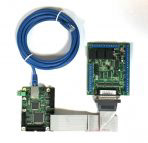Common Robotics Motors - Servo, DC, and Stepper Motors
In robotics, three motors are generally used; the direct current (DC), stepper and radio controlled ('RC') servo motors. Servo motors are used in most robotic projects. Reasons include its high accuracy and degree of control with pulse width modulation ('PWM'). Compared with other common motors; DC and stepper motors, servo motors are the clear choice for projects requiring specific movements.
If you want to buy stepper motor, then you can browse https://www.automationtechnologiesinc.com/

Inside a stepper type, lie a series of coils. These coils create magnetic field that respond to permanent magnets, in turn creating rotations. To control the rotation, coils must be switched on (rotate forward) and off (reverse) constantly. Sequence of (or phase pattern) 'ons' and offs turn the stepper motor.
The stepper type is not too widely available. A lack of familiarity with these motors' application eliminates its choice from the project. For a DC, applying DC voltage will rotate the shafts, continuously clockwise and anti-clockwise (reverse polarity DC voltage).
Even a H-bridge circuit is needed for the reverse (anti-clockwise) mechanism. Degree of controls needed for a high precision project like a robotic arm and therefore the DC type is not suitable.
If you are looking for the best variable stepper motor, then you can browse the web.

Put in a simple way, DC motors simply rotate continuously as long as given power. While servo motors are smarter than DC motors because they can be programmed to turn in specific amount of angles. Stepper motors are hardly used and is the least popular. A common way to get a free stepper motor is from old floppy disk drives or 'CD-rom' drives. These are good sources for reaping a free stepper motor.
